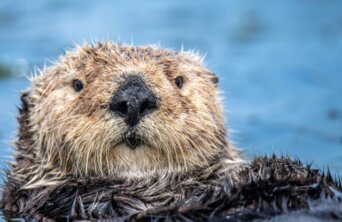- About
- Topics
- Picks
- Audio
- Story
- In-Depth
- Opinion
- News
- Donate
- Signup for our newsletterOur Editors' Best Picks.Send
Read, Debate: Engage.
There are 13 species of otters in the world, three of which are found in India: the Smooth Coated otter, the Asian Small Clawed otter, and the Eurasian otter.
Among these, the Smooth-coated otters are classified as Vulnerable according to the International Union for Conservation of Nature (IUCN) Red List, as their population is decreasing.
Otters are sighted in the northern parts of India, such as the Corbett, Dudhwa Tiger Reserves, Katerniaghat Wildlife Sanctuary, Kaziranga National Park in Assam, Sundarbans, Bhitarkanika, and Coringa in East India, and Periyar Tiger Reserve and Nagarhole National Park in South India.
The animal is threatened by habitat loss, shrinking wetlands, poaching, and reduced prey.
Pollution, sand mining, and fishing are other issues that are shrinking their habitat, prompting several measures to conserve the species across India.
In 2018, the Karnataka government earmarked a 34 km stretch along the Tungabhadra river as the country's first otter reserve in Bellary district.
The Kerala Forest Research Institute (KFRI) also started an initiative to study otters outside their protected areas. This is also because otters are not necessarily found in the protected zone, and extending conservation activities outside of it is essential. Nature's Nest in Goa carried out similar work with their otter conservation program.
As a keystone species, otters are indicative of healthy river systems. This is why there is an urgent need to involve key stakeholders to ensure fruitful conservation activities. Conservationist Malhar Indulkar is working to conserve otters and their habitats in the Tillari region of Maharashtra. He actively works with village-level engagement programs, like the children's 'otter festival'.
Despite efforts, the number of otters continues to decline. With challenges in documenting and the intent to conserve them being incidental, measures implemented need to see the desired results. Insufficient data is another factor that negatively impacts otter conservation.
The need is to take a more holistic approach that involves educating local communities and fisherfolk to help save these mammals. A tight legal framework that controls any trade of these mammals and reduces agricultural pesticides in farmlands are other aspects that experts believe can benefit the otters well.
Making these aspects a reality means the administration must follow through and ensure these adorable mammals receive their rightful treatment.
Image by mana5280.

